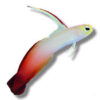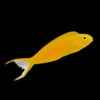Dragons in Traditional Chinese Songs and Music
Dragons have been a central symbol in Chinese culture for thousands of years, representing power, wisdom, and good fortune. Their presence extends beyond mythology and visual arts into the rich world of traditional Chinese music. From ancient folk songs to imperial court compositions, dragons have inspired numerous musical pieces that reflect their majestic and spiritual significance. This article explores how dragons are portrayed in traditional Chinese music, their symbolic meanings, and their role in cultural and historical contexts.
1. The Symbolism of Dragons in Chinese Culture
Before diving into their musical representation, it is essential to understand the symbolic role of dragons in Chinese traditions. Unlike in Western mythology, where dragons are often depicted as fearsome creatures, Chinese dragons are seen as benevolent beings that bring prosperity, rain, and balance to nature.
In Chinese philosophy, dragons are associated with yang energy, signifying strength, masculinity, and the active principle of the universe. Emperors of China often likened themselves to dragons, using the creature as a symbol of their divine rule. These cultural perceptions are deeply woven into music, with compositions often celebrating the dragon’s power and grace.
2. Dragons in Traditional Chinese Music Genres
2.1. Imperial Court Music
During the dynastic periods, court music played a significant role in ceremonies, rituals, and celebrations. Many compositions featured themes of dragons, symbolizing the emperor’s divine right to rule.
- “Dragon Soars in the Sky” (龙腾飞天): This was a piece performed in the imperial palace, using instruments like the guqin (古琴) and pipa (琵琶) to create a grand and majestic soundscape.
- Dragon dances accompanied by music: Imperial ceremonies often included dragon dances with traditional percussion and wind instruments, reinforcing the grandeur of the emperor’s presence.
2.2. Folk Songs and Festival Music
Folk music featuring dragons is deeply connected to festivals and community celebrations. During the Dragon Boat Festival (端午节), traditional songs and chants accompany the dragon boat races.
- “Dragon Boat Song” (龙舟歌): A rhythmic folk song sung by rowers during dragon boat races, meant to synchronize paddling and invoke the dragon’s strength for victory.
- “The Roaring Dragon” (龙吼): A folk song that mimics the mythical dragon’s roar, using powerful drumming and deep vocalizations.
2.3. Religious and Ritual Music
Dragons are also present in religious ceremonies, particularly in Taoist and Buddhist music, where they symbolize protection and spiritual power.
- Taoist ritual music often includes references to dragons in chants and hymns, calling upon their celestial energy for blessings.
- Buddhist temple music sometimes features dragon imagery in compositions meant to invoke rain and harmony.
3. Instruments and Their Role in Depicting Dragons
Different traditional Chinese instruments are used to mimic the qualities of a dragon—whether it be its mighty roar, fluid movements, or celestial presence.
3.1. Guqin (古琴) – The Scholar’s Dragon
The guqin, a seven-string zither, is often associated with scholars and sages, who viewed dragons as symbols of wisdom. Some guqin compositions, like “Dragon’s Whispers” (龙吟), use soft, flowing melodies to evoke the image of a dragon soaring through the clouds.
3.2. Pipa (琵琶) – The Dancing Dragon
The pipa, a four-stringed lute, is capable of rapid finger-plucking techniques that resemble the movements of a twisting dragon. Songs like “Dancing Dragon in the Moonlight” (月下舞龙) use the pipa to create lively, intricate melodies.
3.3. Guzheng (古筝) – The Water Dragon
The guzheng, a plucked zither with 21 strings, often represents water, a fundamental element linked to dragons. Pieces like “Dragon Crossing the River” (龙渡江) use flowing, wave-like sounds to depict the mythical creature moving through water.
3.4. Drums and Percussion – The Dragon’s Roar
Percussion instruments, including drums (鼓) and gongs (锣), are essential in dragon-related performances. They provide powerful rhythms that mimic a dragon’s roar or the thunder it commands when summoning rain.
4. Famous Dragon-Themed Compositions in Chinese History
Several classical compositions highlight the dragon’s significance in music:
- “Nine Dragons Melody” (九龙吟) – A famous guqin piece celebrating the nine legendary dragons of Chinese mythology.
- “The Flight of the Golden Dragon” (金龙飞天) – A high-energy orchestral piece performed in imperial courts.
- “Azure Dragon’s Awakening” (青龙觉醒) – A temple music composition meant to invoke blessings from the celestial dragon.
5. Modern Influence: Dragons in Contemporary Chinese Music
Though deeply rooted in tradition, dragon symbolism has also influenced modern Chinese music. Today, many contemporary Chinese orchestras and fusion musicians incorporate traditional dragon-themed elements into their compositions.
- Chinese pop and rock songs sometimes feature lyrics about dragons to symbolize strength and perseverance.
- Movie soundtracks and theatrical performances use traditional instruments to evoke the power of dragons in legendary tales.
- Electronic and fusion music combines traditional dragon themes with modern sounds, creating a bridge between old and new musical expressions.
Conclusion
Dragons in traditional Chinese music are more than just mythical creatures—they embody the cultural, spiritual, and philosophical values of the Chinese people. Whether through imperial court music, folk songs, ritual chants, or instrumental performances, dragons continue to inspire generations of musicians and listeners. Their presence in music remains a testament to their enduring legacy in Chinese history and culture.
As China’s musical traditions evolve, the dragon remains a powerful and revered symbol, reminding us of the deep connection between mythology, music, and identity.


